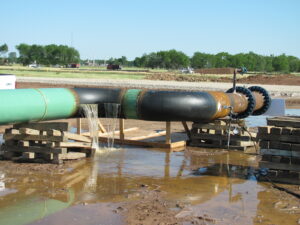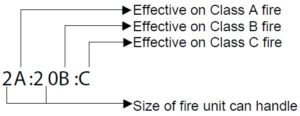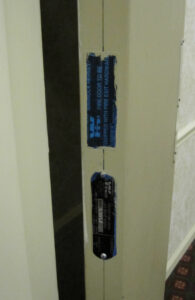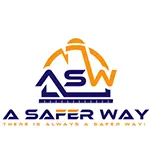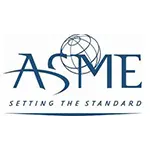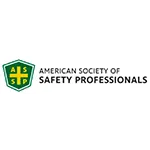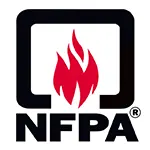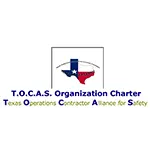CLICK HERE to Renew your Membership
CLICK HERE for a NEW Membership
CLICK HERE to see eligibility requirements for FREE Membership
If you have any questions, please contact me
We offer:
- Over 17,600 categorized unsafe acts/conditions and accident/injury photos
- Over 1,450 ppt's & doc's
- Over 3,975 technical articles on Process Safety & Occupational Safety & Health matters
- Over 450 videos

I am proud to announce that have extended our”Partners in Safety” agreement for another year (2025).
CI Members, send me an e-mail to request your FREE SAFTENG membership.





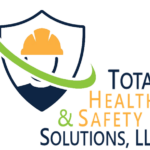








May 15, 2011
Worker climbs out of excavation just in the nick of time before it collapses. (1 min 26 s)
…
HomeRead More »
Read More
May 14, 2011
These tables were developed to be used with Garlock spiral wound gaskets. They are to be used only as a general guide. They should not be considered to contain absolute values due to the large number of uncontrollable variables involved with bolted joints. If there is doubt as to the proper torque value to use, we suggest that the maximum value be used. All bolt torque values are based upon...
Read More
May 14, 2011
These are pipe installation instructions. I have posted the portion regarding the joining of flanges. Note the “torque” requirements. Wipe clean the socket and the plain end. Brush both the gasket and plain end with soapy water or an approved push-on joint lubricant meeting the requirements of ANSI/AWWA C111/A21.11 immediately before slipping the gasket onto the plain end for...
Read More
May 13, 2011
Many THANKS to my NEW & RENEWING Corporate Partners in Safety! since 2005 since 2008 since 2005 since 2008 2011 Fatality Tracker Electrical 19 (2010 = 90) (2009 = 100) Forklift/Manlift Mobile Equipment 34 (2010 = 110) (2009=88) Mining 71 (2010 = 480) (2009 = 586) Explosions 86 (2010 = 246) (2009 = 302) Cranes 14 (2010=50) (2009 = 82) Falls 44 (2010 = 139) (2009 = 172) (2008 = 250) Work Zone...
Read More
May 12, 2011
UPDATED on 5/19/11 @ 9:02 p.m. EST
This incident occurred 4 May 2011 on a pipeline project during a hydro-test of new piping.
…
HomeRead More »
Read More
May 11, 2011
Just by sheer luck (bad) I, unfortunately, came across a perfect example of how IMPROPER torquing can create a VERY SERIOUS HAZARD in a chemical process. I was helping a client with a process that has a runaway reaction potential. Our study took us to the reactor so we could examine the pressure relief system, where we noticed the rupture disc holder flange was off center and the two flange...
Read More
May 9, 2011
PROPANEby Dennis Hoaglin (SUNG TO THE TUNE OF “COCAINE” AND TO THE ACCOMPANIMENT OF AIR GUITAR) If you wanna get chilled, blown up or killed — PROPANE.Forget the rules, act like a fool — PROPANE.It’s a gas, it’s a gas, it’s a gas — PROPANE. If sprayed with this gas, it’ll freeze off your ass — PROPANEAnd if splashed in the face, you’ll be blinded and maced — PROPANEWear...
Read More
May 8, 2011
Most workers have been taught what a Class A fire is, but have they been taught what 1-A, 2-A, 3-A, 4-A, 6-A, and 8-A… mean? Here are some basic facts regarding fire extinguisher ratings. Class A and B extinguishers will only have numerical ratings; Class C and D do not. The rating is an indication of how much fire they will SAFELY extinguish. For example, 2-A:20-BC will...
Read More
May 8, 2011
How does your facility manage this? These days most facilities use written Hot Work Permits, either because of regulatory requirements or they are required by their insurance company. And most facilities also assign a fire watch for each permit. But this is where the similarities end and how the fire watch personnel are managed is the common flaw in the execution of a safe hotwork...
Read More
May 8, 2011
A clear explanation of UL product certification will help customers and others understand the meaning of “UL Listed,” “UL Classified,” “UL Performance Verified” or “UL Recognized Component.”
…
HomeRead More »
Read More
May 7, 2011
Flammable or combustible liquids must be stored in tanks or closed containers. But how much flammable liquid can be outside of a flammable cabinet or storage room at any time?
…
HomeRead More »
Read More



